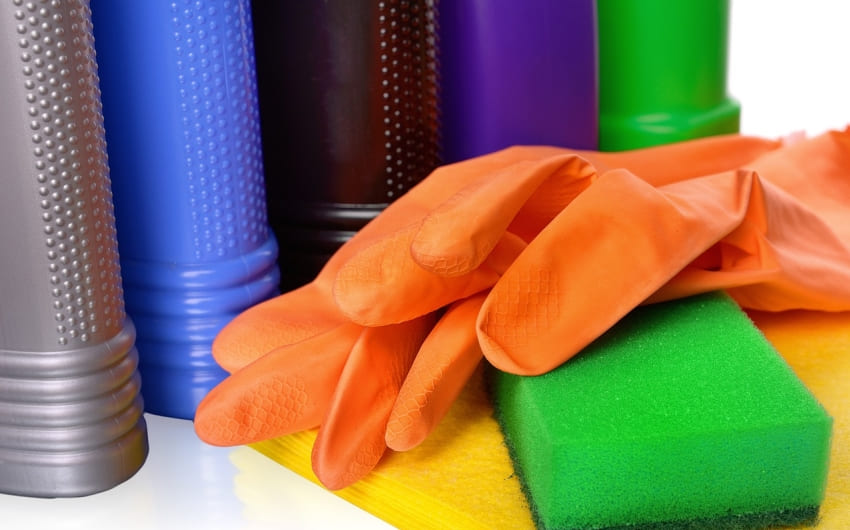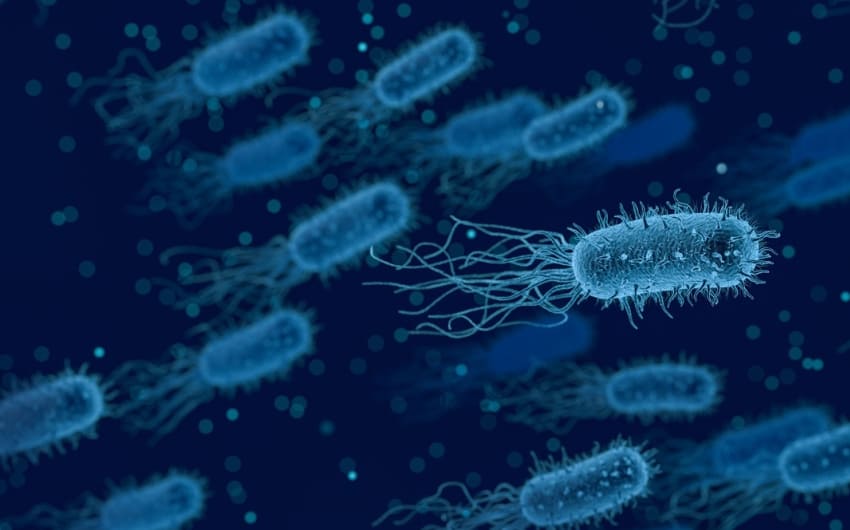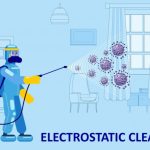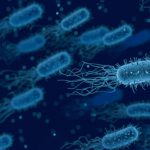
What is Electrostatic Disinfection?
Electrostatic disinfection is a method of disinfecting surfaces using magnetically charged (atomised) disinfectant applied through a specialised spray gun.
It is a highly effective and efficient method of disinfecting surfaces and hard to reach areas.
Electrostatic disinfection can be used anywhere, but it is ideal for disinfecting industrial and commercial spaces and for disinfecting surfaces in large buildings. Offered as a commercial surface, electrostatic spraying can cover the areas that need to be cleaned in a fraction of the time that would be required to disinfect them manually.
How Electrostatic disinfection works
Electrostatic disinfection is done using an electrostatic back-pack sprayer. This is worn by the person doing the spraying and is fully hand-held. No other machinery or materials are used.
The disinfectant solution is mixed with air in the back—pack part of the sprayer. The particles in the solution are then positively charged by an electrode in the sprayer as the solution is sprayed through the nozzle. The spray gun gives particles a positive charge as they pass through the spray gun mechanism. The positively charges ions then repel each other, while they are attracted to negative ions on surfaces.
- The magnetic attraction augments the action and reach of the spray gun.
- The disinfectant particles go further and stick on surfaces more efficiently.
- The disinfectant coats the surface evenly and thoroughly, not missing any patches or areas that are hard to reach. (A normal spray gun is far less targeted and efficient as much of the disinfectant will hang in the air, eventually falling on the surface but with much of it potentially falling on the floor.)
What Electrostatic spraying is used for
Electrostatic disinfection can be used anywhere. However, it is ideal for disinfecting areas with difficult, or impossible, to reach surfaces.
Electrostatic spray cleaning is not a new technology. It has always been used for disinfecting large commercial surfaces. However, it was generally used infrequently or as part of a maintenance and cleaning schedule, for one-off disinfecting events, and for cleaning hospitals and clinics. Since the start of the Covid-19 Pandemic, electrostatic disinfection has become a front-line prevention tool, used to disinfect:
- Hospitals, schools, shops, supermarkets, offices and auditoriums.
- Taxis, school busses and other forms of public transport.
- Anywhere where there is thought to be a risk of Covid-19 contamination
Electrostatic disinfection is not used instead of cleaning on visibly dirty or greasy surfaces. Heavy dirt must still be removed first. However, cleaning does not ensure disinfection. Manual cleaning can spread viruses and bacteria from one surface to another. Following up with electrostatic spraying ensures that surfaces do not only look clean but are 100% free of contamination.

Advantages of Electrostatic disinfection
- It is the only form of spray disinfection that will reliably coat 100% of the surface that needs to be disinfected.
- The coating of disinfectant is ensured of being completely even and free of drips and puddling. (An example of the perfectly even coating that can be applied with electrostatic spray technology is car paint sprayed on to vehicles)
- It is fast. Large areas can be disinfected reliability in a fraction of the time that disinfection through normal spray mechanisms or physical application.
- The layer of disinfectant also evaporates quickly. This means there are no sticky residues left on surfaces.
- Provided a safe disinfectant is used, it can be used while people are still in the building. The disinfectant droplets are instantly attracted to surfaces, so it doesn’t hang in the air to be breathed in.
- There is no risk of damage to surfaces, or staining.
- The efficient application method means that it is not necessary to apply heavy cleaning regimes or use toxic chemicals to ensure 100% disinfection.












